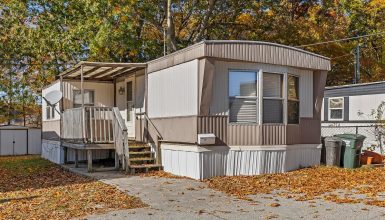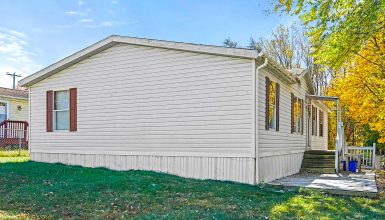Putting a foundation under your existing mobile home can cost anywhere from $5,000 to $10,000. This range covers basic pier and beam systems. If you want a full slab or crawl space, expect costs to climb closer to $20,000.
Factors That Affect Cost
Your final price tag depends on more than just the foundation type. Many details come into play. Here’s a closer look at four key cost drivers.
1. Condition of Your Lot (Rocky, Sloped, or Level)
If your home sits on rocky ground, crews may need to break up or remove rocks. That adds extra labor charges. Sloped lots need grading, which costs even more. Flat land is usually the simplest. It often comes with fewer site-prep fees.
2. Local Building Codes and Permit Fees
Different places have different rules. Some towns require tougher supports, which cost more to install. Others want many inspections or extra permits. Each permit has a price, so these fees add up fast. Check these rules early to avoid budget surprises.
3. Material Choices (Concrete, Blocks, or Piers)
Materials shape the final bill in big ways. Concrete slabs tend to cost more upfront. But they last a long time. Concrete blocks can be cheaper, yet they need skilled labor to place and seal. Piers may be less expensive. They’re also easier to install. However, they might not provide the same insulation or weather protection level.
4. Labor Rates in Your Area
Labor prices swing a lot by location. Big cities often charge a premium for skilled work. Rural areas might have lower rates. Even so, you should hire pros who follow local codes. Quality work is worth the investment.
Popular Foundation Types
You have three main choices. Each type comes with its pros, cons, and price ranges.
1. Pier and Beam
This setup uses sturdy piers pushed into the ground. A beam then rests on top of the piers. It holds up the mobile home’s frame. This method keeps the home off the ground. That helps with ventilation beneath the floor.
Pier and beam systems are often the least expensive. You might pay anywhere from $5,000 to $10,000. Costs go up if you need extra piers or special footings.
2. Slab Foundation
Crews pour a thick layer of concrete onto the prepared ground. That concrete pad serves as a solid base. It offers good protection against pests and moisture.
Slab foundations can reach $15,000 or more. Extra grading or thicker concrete can boost the total. If your soil is not stable, you might need reinforcements, too.
3. Crawl Space
A vented crawl space has air vents that bring in outside air. This helps control moisture but can also let in cold drafts. An unvented crawl space is sealed to keep out outside air. It may need a dehumidifier to stay dry.
Crawl spaces often fall in the middle-cost range. They’re pricier than pier and beam but cheaper than a full basement. Depending on materials and site conditions, expect to spend $10,000 to $20,000.
Planning and Budgeting Tips
Smart planning keeps your project on track. These four tips help you avoid sticker shock and wasted effort.
1. Get Multiple Quotes for Accurate Pricing
Reach out to at least three reputable contractors. Compare their bids side by side. Look at what’s included and excluded. This way, you can see a fair price range.
2. Factor in Site Preparation Costs
Clearing trees, leveling land, or removing rocks can add up. Some projects need special drainage solutions, too. Plan ahead so you don’t blow your budget on surprise fees.
3. Ask for Itemized Estimates
Detailed estimates show where your money goes. Look for line items like materials, labor, and permits. If a contractor gives a vague total, ask questions. You should know exactly what each dollar covers.
4. Set Aside a Contingency Fund for Surprises
Issues can pop up once work begins. Old pipes may need replacing. Extra equipment might be needed to stabilize the soil. Aim to have 10% to 20% of your budget saved for unexpected expenses.









